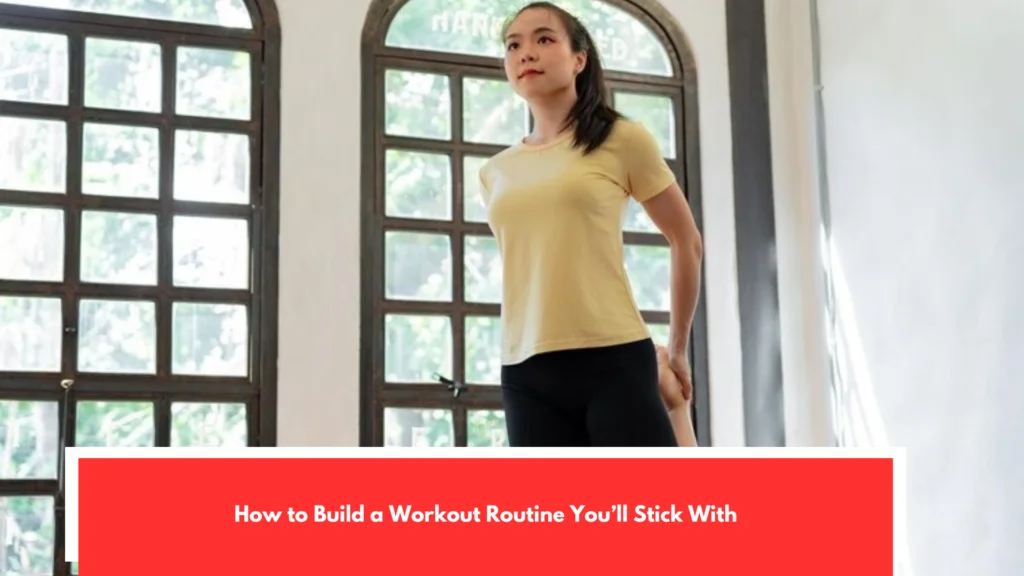Maintaining a gym routine has many advantages. First, because it will make it easier to achieve your goals. Second, because of all the benefits exercise has for your physical health. For example, it can help you calm anxiety and stress, provide energy, improve your sleep quality, strengthen muscles and bones, lose weight, and tone up, among others. We know that sometimes it can be difficult to design a gym routine, so in this article, we explain what you need to do to meet your body’s needs. Read on to learn how to build a workout routine you’ll stick with.
If you don’t have much of an idea of what you want, can be a rather complex task. Therefore, the first and most important thing is to focus on your goals and come up with something realistic. If you’re just starting out and don’t have a personal trainer, it’s best to start with 12 repetitions, and after a few weeks, you could increase it. When selecting exercises, keep the following in mind Of course, everything varies depending on the type of training you’re going to do, as well as your physical condition. These are the standard values for a basic routine.
How to pick workout

Intensity and volume are two variables that are closely linked to the previous ones, as we’ve indicated. What you should keep in mind is that intensity refers to the level of effort exerted for each repetition (movement or exercise). Volume, on the other hand, refers to the total amount of work performed. It’s important to pay attention to this last aspect to avoid stress and overtraining, as well as to prevent injuries.
It’s very important to dedicate time to rest so that the body can recover from injuries and for the exercise to take effect. Keep in mind that overexertion can impact the body’s immune response, preventing it from burning fat, for example, to conserve energy. Rest applies to both the recovery day (or days) and the rest between exercises. In the latter case, keep the following in mind Designing an effective gym routine may seem challenging at first, but with proper planning and a clear focus on your goals, it becomes an achievable task.
Getting Started

Remember that the key to success lies in consistency and gradually adjusting the intensity of your exercises. Make sure you balance different types of exercises, from resistance and strength to cardio, and work all muscle groups for a well-rounded workout. Don’t underestimate the importance of good nutrition and adequate rest to maximize the benefits of your routine. With these tips, you’ll be well on your way to a healthier, fitter life. When we first start going to the gym, we all make the mistake of training every day and not resting. We design an impossible training routine, giving our body no time to recover, and we end up exhausted, unmotivated, and likely leaving the gym soon after.
Designing or creating a gym routine if you don’t have much of an idea of what you want can be a rather complex task. Therefore, the first and most important thing to do is focus on your goals and come up with something realistic. Once you’ve mastered this level (don’t take too long), ideally, you should move on to bodyweight or free weight exercises (such as dumbbells, barbells, kettlebells, etc.). It’s important to promote cross-training.
Staying Consistent

Open kinetic chain exercises are those in which the joint furthest from the area of the body where the movement is performed moves freely and without any resistance. For example, the arms when working with dumbbells in upper body exercises. The wrist joint is the furthest segment of the kinetic chain, so when performing an exercise, it moves through space without any hindrance. In the case of the closed kinetic chain, the opposite occurs. The joint furthest from the body area does not move. For example, with push-ups, since the wrist joint is fixed and in contact with the surface at all times.
However, often what we need isn’t an overly intense routine, but rather to gradually incorporate movement into our daily routines. Because yes, we can train every day of the week if we want to, but only in an appropriate and sustainable way, not overtraining week after week. We can establish short daily workouts that allow us to have more energy, be stronger, and more flexible. But the first thing we must do is determine how much exercise we want or need to do. All of this will depend on our goals and fitness level. Training for five years isn’t the same as starting two days ago.
Conclusion

The World Health Organization recommends that adults between 18 and 64 years of age engage in at least 150 minutes of moderate exercise per week or between 75 and 150 minutes of vigorous intensity exercise. We must also remember to work on strength at least twice a week. For those over 65, it’s important to work on balance and flexibility. To be healthy, there are certain aspects of fitness that we should focus on in our training routine cardio, strength, balance, flexibility, and, of course, adequate rest. We can start by deciding what exercise we want to do each day.
For example do cardio on Mondays and Wednesdays strength on Tuesdays and Thursdays flexibility and balance on Fridays and Saturdays and finally, take an active rest break on Sundays, either by walking or stretching. If we want to gain muscle, we can organize each day by muscle group, training with or without equipment. Ideally, we should do between two and four sets with 10 repetitions per exercise (although this depends on the weight we use and our goal). We can also include HIIT (high-intensity interval training), as it will be very useful when we don’t have much time, since, due to the intense workouts, these workouts are short and quick.



